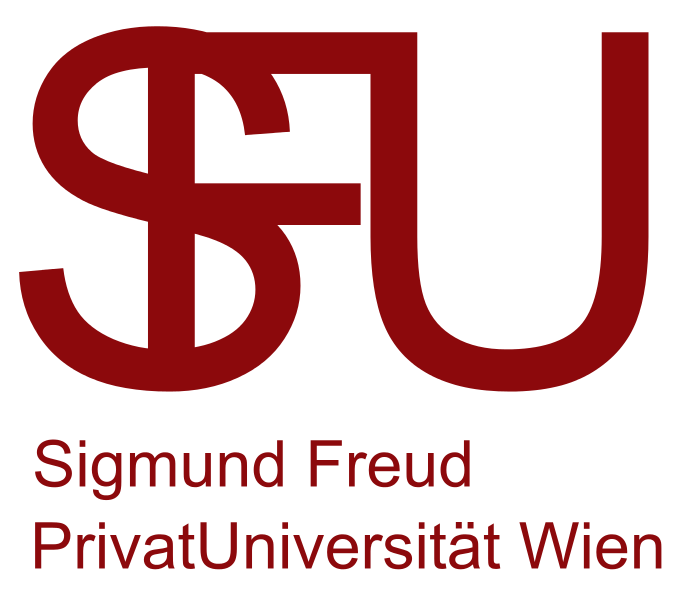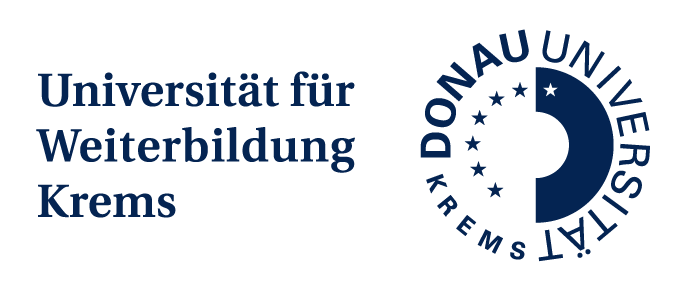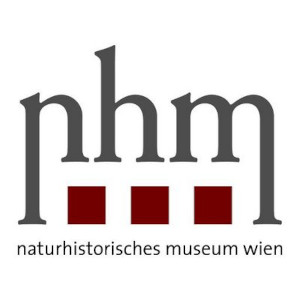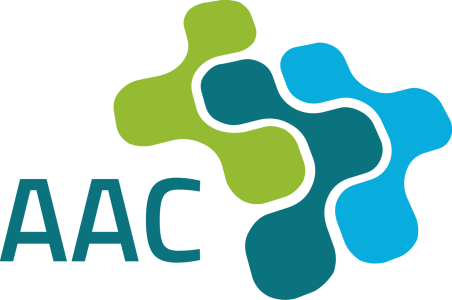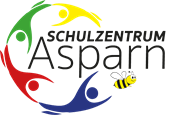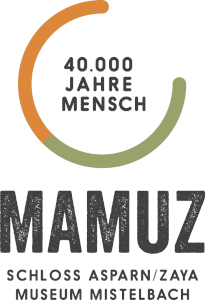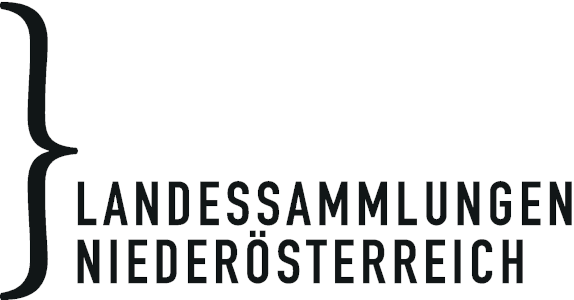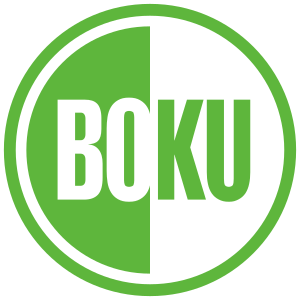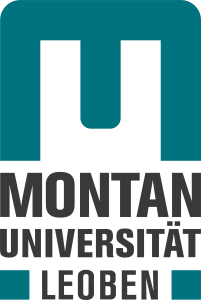The Psychological is Participatory
Counselling centres for women* are important institutions that have been founded since the 1980s by the second women's movement. In the project, researchers are conducting research together with counsellors and clients of Viennese women's* counselling centres. We are interested in the life stories of women* who seek help at counselling centres. How can women lead a good life in this society today and what role can women's counselling play in this? In workshops, questions and methods are developed together with the project partners. The women* and the counsellors are guided to document their knowledge and experiences in the form of narrated stories or/and with visual methods. The use of a critical participatory action approach enables both counsellors and clients to reflect on changes that have occurred through a feminist, psychological counselling process.
The perspective of women clients has very rarely been considered in the history of psychology. Especially structurally disadvantaged women* are often not heard, e.g. migrant women or single parents affected by poverty. Research with clients aims to empower women* and to explore with them how social circumstances have shaped their lives.
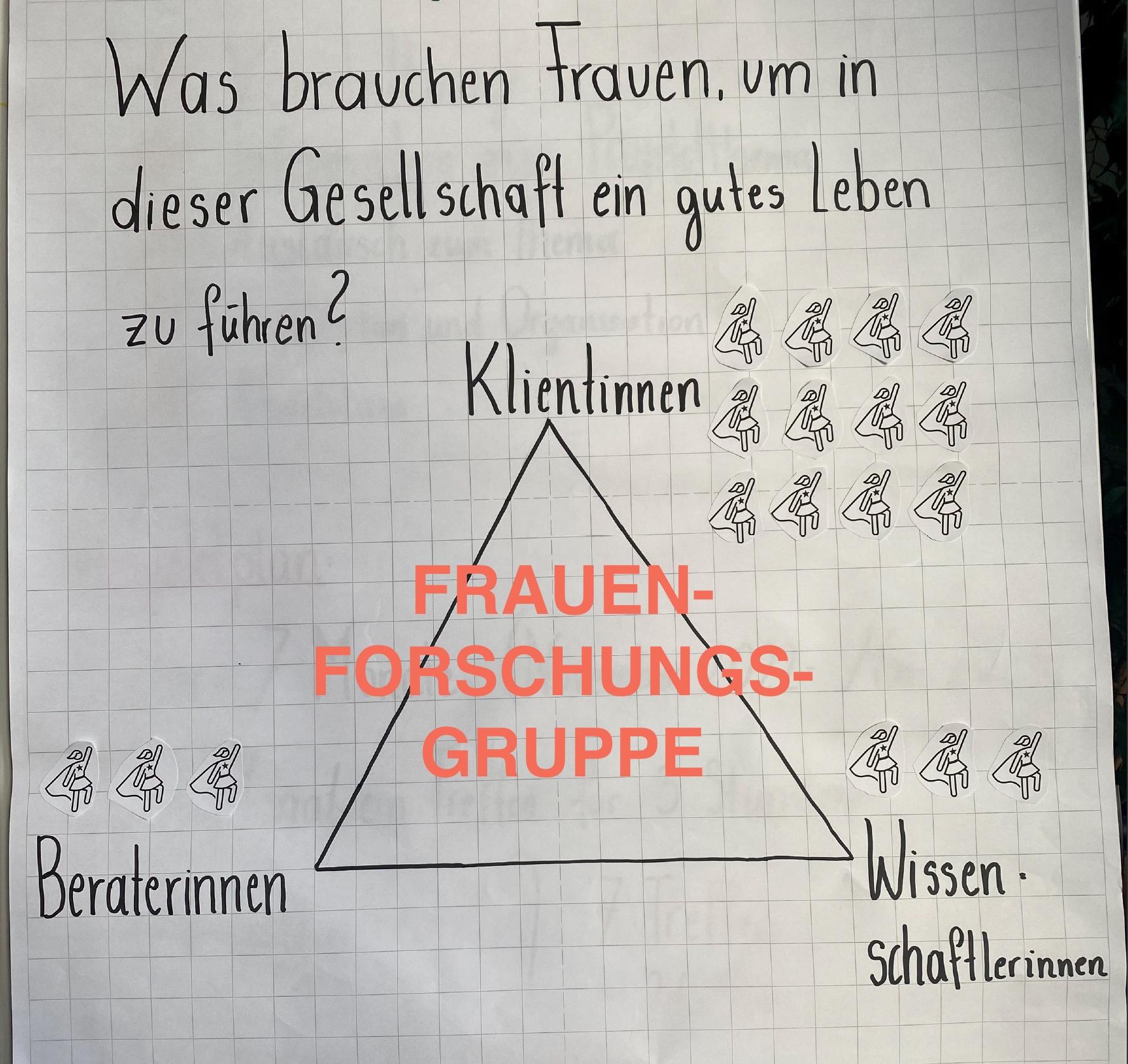
"The Psychological is Participatory - Feminist critical participatory action research with women's counselling centres and their clients" (2022-2023), funded by the Austrian Science Fund FWF (TCS 112 Top Citizen Science) and co-financed by the Women and Family Department of the Arbeiterkammer.
Project management: Ass.-Prof. Dr. Nora Ruck
Project team: Dr. Barbara Rothmüller, Julia Struppe-Schanda, MSc.
In the project we are conducting research together with Dr. Bettina Zehetner from the counselling centre Frauen* beraten Frauen* and Dr. Sigrid Awart and Dr. Andrea Kaiser-Horvath from the counselling centre Peregrina as well as with 12 clients from both counselling centres*. Prof. Michelle Fine & Prof. María Elena Torre (CUNY), Prof. Thomas Stefan (Postdam) and Prof. Alexandra Rutherford (Toronto) advise us on the Advisory Board of the project. The project is scheduled to be completed in December 2023.
*Participation is restricted to these clients.
Podcast episode
In April 2025, Nora Ruck was a guest on the Österreich forscht podcast Wissen macht Leute - you can listen to the episode here (in German).
This project fulfils version 1.1 of the quality criteria for citizen science projects on Österreich forscht.
United by Crisis?
Participate in archaeological field surveys and/or in cleaning, documenting & interpreting archaeological finds.
A transdisciplinary look at the early Neolithic communities in the Schletz settlement cluster
The project aims to explore the surroundings of the famous Neolithic settlement of Asparn/Schletz (Lower Austria). Numerous human remains suggest a violent attack on this site in the Late Linear Pottery Culture, approx. 7.000 years ago.
Due to its size and earthworks, we assume that Schletz was the central site of a cluster of smaller settlements in surrounding region. By researching these settlements, we hope, among other things, to increase our knowledge on the background of the massacre and on the origin of the people who died in Schletz.
We cordially invite you to work with us as a Citizen Scientist!
In the project, we are searching for Neolithic finds (pottery, stone tools, etc.) at known or suspected sites near Asparn/Schletz together with interested people and collectors. During our surveys, we go over the fields at regular intervals and map the findings that we discover. Later on, we clean them together und create a scientific documentation and evaluation. Here you can find further information on how you can participate as a Citizen Scientist. However, as we have planned a format of intensive cooperation, we have reached the maximum number of Citizen Scientists that can participate in the project. Nevertheless, we can still offer you to join the waiting list for the participation in the project (or possible follow-up projects).
In another part of the project, local middle school students extract and process soil samples from the area of the LPC sites to create an isoscape (= isotope landscape). Through a comparison with Sr isotope ratios of the human remains, this will allow a discussion of whether the people that died in the massacre might have grown up locally or not.
If you are passively interested in the project, you are invited to visit the news page of our website, where we regularly publish news about the project.
Citizen Science Seminar
In January 2025, Johanna Irrgeher, Julia Längauer and Jakob Maurer gave a lecture on 'The Neolithic "Massacre of Asparn/Schletz" - transdisciplinary research with citizen scientists' at the Citizen Science Seminar of BOKU University (in German).
Project partners & cooperation partners
Picture gallery:
-
 Zwentendorf, possible early Neolithic site near to the Zaya-river Zwentendorf, possible early Neolithic site near to the Zaya-river
Zwentendorf, possible early Neolithic site near to the Zaya-river Zwentendorf, possible early Neolithic site near to the Zaya-river -
 Victims of a Neolithic massacre were discovered during archaeological excavations in Asparn/Schletz Victims of a Neolithic massacre were discovered during archaeological excavations in Asparn/Schletz
Victims of a Neolithic massacre were discovered during archaeological excavations in Asparn/Schletz Victims of a Neolithic massacre were discovered during archaeological excavations in Asparn/Schletz -
 Together with Citizen Scientists we do systematic “line walking” for the identification of Neolithic sites Together with Citizen Scientists we do systematic “line walking” for the identification of Neolithic sites
Together with Citizen Scientists we do systematic “line walking” for the identification of Neolithic sites Together with Citizen Scientists we do systematic “line walking” for the identification of Neolithic sites -
 The finds are carefully packed; the find spots are precisely documented with GPS The finds are carefully packed; the find spots are precisely documented with GPS
The finds are carefully packed; the find spots are precisely documented with GPS The finds are carefully packed; the find spots are precisely documented with GPS -
 Newly discovered, unwashed finds „fresh from the field” Newly discovered, unwashed finds „fresh from the field”
Newly discovered, unwashed finds „fresh from the field” Newly discovered, unwashed finds „fresh from the field” -
 Early Neolithic stone tools and potsherds from the Zwentendorf-Hofwiese site Early Neolithic stone tools and potsherds from the Zwentendorf-Hofwiese site
Early Neolithic stone tools and potsherds from the Zwentendorf-Hofwiese site Early Neolithic stone tools and potsherds from the Zwentendorf-Hofwiese site -
 Early Neolithic house (house model in MAMUZ Schloss Asparn/Zaya) Early Neolithic house (house model in MAMUZ Schloss Asparn/Zaya)
Early Neolithic house (house model in MAMUZ Schloss Asparn/Zaya) Early Neolithic house (house model in MAMUZ Schloss Asparn/Zaya) -
 Soil samples are taken by middle school students for the creation of an isotope map Soil samples are taken by middle school students for the creation of an isotope map
Soil samples are taken by middle school students for the creation of an isotope map Soil samples are taken by middle school students for the creation of an isotope map -
 To research the origin of the dead of Schletz, chemical analysis is done on soil samples and human teeth To research the origin of the dead of Schletz, chemical analysis is done on soil samples and human teeth
To research the origin of the dead of Schletz, chemical analysis is done on soil samples and human teeth To research the origin of the dead of Schletz, chemical analysis is done on soil samples and human teeth -
 The core team of the project with scientists from different disciplines is looking forward to working together! The core team of the project with scientists from different disciplines is looking forward to working together!
The core team of the project with scientists from different disciplines is looking forward to working together! The core team of the project with scientists from different disciplines is looking forward to working together!
https://www.citizen-science.at/en/component/k2/tag/culture?start=10#sigProId0cf662b906
The project is funded by:
This project fulfils version 1.1 of the quality criteria for citizen science projects on Österreich forscht.
Everyday Morality
What is this project about?
How can good people do bad things? How can people act contrary to their moral beliefs without having a bad conscience? White lies, rule bending, finding excuses for our own behaviour, which we would judge others for … To be honest, we have all done stuff like that. Nobody is always 100 % moral - misconduct spans from little untruths to refined fraud, from omission of some facts to crimes. All these things have one thing in common: When performing these actions, the same mechanisms are at work that allow us to ignore our moral compass. At least that is what theories assume. In this project, we examine when, how often, in which contexts and by whom these different mechanisms are applied.
Why is this important?
Our goal is to check to what extend theory corresponds with reality. How is unmoral behaviour in everyday life justified? What influence do situational differences and relationships between actors have? Which actions are seen as immoral?
How can Citizen Scientists participate?
Your task is to observe your surroundings after a short online information. Who acts immoral? When? What justifications are provided for this behaviour? Not just encounters in everyday life matter, but also media, newspaper reports, narratives, movies, social media etc. can be analysed. For this, short questionnaires will be sent to you during the course of one week.
At a later point in time, Citizen Scientists are invited to analyse the submitted scenarios, to build categories and thereby check to what extent theory and reality correspond. Another aim is to discover new categories and strategies.
Podcast episode
If you would like to learn more, you can listen to the Wissen macht Leute podcast episode about the project (in German).
This project fulfilled version 1.1 of the quality criteria for citizen science projects on Österreich forscht.
Memories and Imaginaries
Democratic Citizenship
"Memories and Imaginaries" critically explores with students in Austria what it means to be a citizen. Who can or is allowed to actively participate in the political community? Who can or is not allowed to? We address these questions with the aim of finding collective strategies to confront the state of exclusion and marginalization.
The aim of the research is for researchers to explore the importance of remembering, retelling and re-imagining the past and the future plays in living and participating in a political community.
In every community there are different stories of belonging and exclusion. The particular focus will be on migrant, queer and Jewish memories and imaginaries. In their own ways, they all represent stories of exclusion from Austrian society.
We explore how democratic citizenship works by practicing it on a small scale: Students, artists and researchers come together to learn, share and listen about migrant, queer and Jewish memories and ideas. The Citizen Scientists themselves may also bring and share their own experiences of exclusion.
The project sets new impulses in the field of Citizen Science, as it combines Citizen Science with art-based research. Memories and imaginaries are collective and relational forms of knowledge that are experiential, multi-layered in space and time. Citizen science and art-based research are innovative ways to gain insights into such imaginaries and their potential for democratic citizenship.
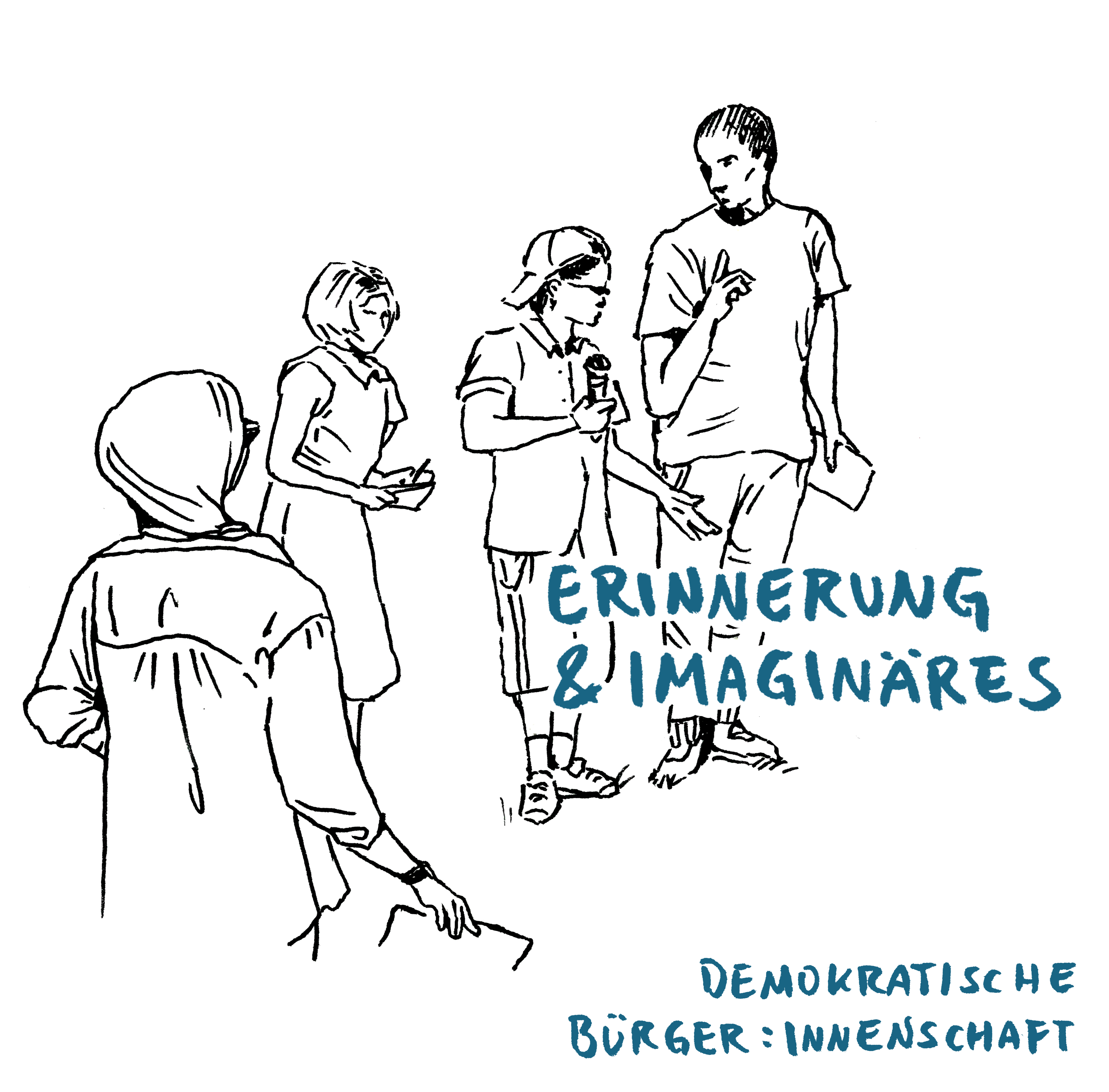
© Felix Deiters
How to participate?
During the co-research period from May to June 2022, a total of three "Remembrance Labs" (May) and one General Assembly (June) took place. The citizen scientists each took part in one of the three labs, which had the same content.
The interim results of all three labs, in the form of graphic recordings and stenographic minutes, were reflected on together in a joint general assembly at the end of June and the collected output was jointly verified.
The Labs artistically took us through the past and present of the three selected communities and enabled collective reflection on how we share situations of exclusion and how we can imagine them if we have not experienced them ourselves or if we do not remember them ourselves (for example because we are too young).
Eating together was as much a part of the collective experience as the mental and physical-affective participation in three group-dynamic, artistically guided exercises.
Artistic inputs were given in each memory lab, in which the Citizen Scientists were also invited to actively participate:
- Rap-poetry with Esra Özmen aka EsRap on the topic of migration,
- Building community by performative story-telling with artist Ndidi Iroh,
- Researching biographies: multi-marginalisations from a jewish perspective.
An expert was invited to each Remembrance Lab to present a short input for the discussion. They came from important civil society organisations:
- Dokumentationsarchiv des österreichischen Widerstandes (DÖW),
- Wiener Wiesenthal-Institut für Holocaust-Studien,
- PH Upper Austria.
The results of the research phase are currently being evaluated and will be published in the form of an artistic book in 2023.
What happens to the contributions of the Citizen Scientists?
The activities during the labs will be documented visually and textually by means of graphic recording (artist Felix Deiters) and a stenographic protocol.
The graphic and stenographic protocols will be included in the book publication "Memories and Imaginaries: Democratic Citizenship". The book will be produced in the last phase of the project (autumn 2022) and presented at a closing event in January 2023.
Contact and research team of the Academy of Fine Arts Vienna
Univ.-Prof. Dr. Marina Gržinić: This email address is being protected from spambots. You need JavaScript enabled to view it.
Dr. Sophie Uitz: This email address is being protected from spambots. You need JavaScript enabled to view it.
Dr. Jovita Pristovšek: This email address is being protected from spambots. You need JavaScript enabled to view it.
This project fulfilled version 1.1 of the quality criteria for citizen science projects on Österreich forscht.
Zeit.shift
Offers active beyond the duration of Zeit.shift
The Zeit.shift project ended in June 2023. The central web offerings continue to be active beyond the project duration. Specifically, the results can be followed via the website. The newly generated web portal is accessible worldwide and the text material provided (several million newspaper pages) is searchable and downloadable. Geodata and content tags can be assigned via an external platform and the online game Ötzit! is freely available. However, an evaluation of the generated data, as formulated in the project description, no longer takes place after the end of the project.
What is the Zeit.shift project about?
The aim of the Zeit.shift project is to establish a long-term, cross-border cooperation for the preservation, development and dissemination of the cultural text heritage of Tyrol and South Tyrol from the late 19th and early 20th centuries. Using historical newspapers as a prototype, the text collections are to be preserved in the long term and made accessible to the general public in a web portal. This offers the opportunity to learn more about one's own cultural heritage and to learn to appreciate historical texts as a source for exciting discoveries. An important focus of the project is the active involvement of the population. Interested citizens are invited to participate and can contribute to the text indexing by annotating the text material online. Together with citizens, relevant key terms and the correct location of the text excerpts will be added in order to improve the usability and searchability of the historical text material.
How can one participate?
Via the Historypin platform, interested citizens can participate in text indexing by describing the content of advertisements in historical daily newspapers and geolocating them via Google Maps in order to virtually reconstruct the shopping streets of 100 years ago. In this way, one can gain an insight into which products were traded and which events took place in yesterday’s world. One discovers professions and trades, some of which no longer exist, and has the opportunity to draw one's own comparisons of what can be found in the places mentioned today. This is only a small excerpt of the variety of topics offered by the advertisements in the press of that time - a voyage of discovery into the world of our ancestors. Participation is not tied to a specific time or place; all you need is internet access and a computer or smartphone. Tutorials will help with questions, and there is also the possibility of contacting the Zeit.shift project staff directly (This email address is being protected from spambots. You need JavaScript enabled to view it.). The citizen science activities are aimed at all citizens and no special knowledge is necessary to participate in the project.
Another citizen science approach in the Zeit.shift project was developed with the gamification application Ötzit!. The online game Ötzit! is about saving Ötzi from dangerous animals by correctly typing out falling words in Fraktur script. A game against time! Ötzit! is primarily aimed at German-speaking pupils aged 11-14, but is open to anyone interested. The aim of the game is to create an awareness of the digitised newspaper collections and to practise reading historical documents in Fraktur script. All data anonymously provided by the players (e.g. typed words) was analysed and used to explore automated OCR corrections via crowdsourcing and to improve the searchability of the digitised collections.
Why is it important and what happens to the data?
The benefit for the citizens is to experience the newspapers as a historical source and to learn something about their own cultural heritage through them. Together with the project team, they discover hidden archival treasures, thus making an invaluable contribution to indexing. In the project, the Zeit.shift portal for archiving, managing, researching and presenting digitised historical daily newspapers of the Tyrolean region was implemented. Using search filters, such as place and family names, time period, etc., the search results can be narrowed down precisely and the search term appears in the full text highlighted in colour. The data generated by the Citizen Science activities serve as support for the computer-linguistic analysis (e.g. correction of recognition errors in digitised texts in Fraktur script).
Photo gallery
-
 Unterinntaler Bote, 03.01.1908, S. 6 Unterinntaler Bote, 03.01.1908, S. 6
Unterinntaler Bote, 03.01.1908, S. 6 Unterinntaler Bote, 03.01.1908, S. 6 -
 Schwazer Lokal-Anzeiger, 16.04.1927, S. 4 Schwazer Lokal-Anzeiger, 16.04.1927, S. 4
Schwazer Lokal-Anzeiger, 16.04.1927, S. 4 Schwazer Lokal-Anzeiger, 16.04.1927, S. 4 -
 Unterinntaler Bote, 03.01.1908, S. 6 Unterinntaler Bote, 03.01.1908, S. 6
Unterinntaler Bote, 03.01.1908, S. 6 Unterinntaler Bote, 03.01.1908, S. 6 -
 Reuttener Nachrichten, 04.07.1930, S. 3 Reuttener Nachrichten, 04.07.1930, S. 3
Reuttener Nachrichten, 04.07.1930, S. 3 Reuttener Nachrichten, 04.07.1930, S. 3 -
 Unterinntaler Bote, 03.01.1908, S. 8 Unterinntaler Bote, 03.01.1908, S. 8
Unterinntaler Bote, 03.01.1908, S. 8 Unterinntaler Bote, 03.01.1908, S. 8 -
 Unterinntaler Bote, 03.01.1908, S. 10 Unterinntaler Bote, 03.01.1908, S. 10
Unterinntaler Bote, 03.01.1908, S. 10 Unterinntaler Bote, 03.01.1908, S. 10 -
 Unterinntaler Bote, 03.01.1908, S. 7 Unterinntaler Bote, 03.01.1908, S. 7
Unterinntaler Bote, 03.01.1908, S. 7 Unterinntaler Bote, 03.01.1908, S. 7 -
 Reuttener Nachrichten, 27.06.1930, S. 4 Reuttener Nachrichten, 27.06.1930, S. 4
Reuttener Nachrichten, 27.06.1930, S. 4 Reuttener Nachrichten, 27.06.1930, S. 4 -
 Schwazer Lokal-Anzeiger, 16.04.1927, S. 4 Schwazer Lokal-Anzeiger, 16.04.1927, S. 4
Schwazer Lokal-Anzeiger, 16.04.1927, S. 4 Schwazer Lokal-Anzeiger, 16.04.1927, S. 4 -
 Reuttener Nachrichten, 01.02.1929, S. 4 Reuttener Nachrichten, 01.02.1929, S. 4
Reuttener Nachrichten, 01.02.1929, S. 4 Reuttener Nachrichten, 01.02.1929, S. 4
https://www.citizen-science.at/en/component/k2/tag/culture?start=10#sigProId4ff201727f
Video

This project fulfilled version 1.1 of the quality criteria for citizen science projects on Österreich forscht.
Werkstatt Neu Leopoldau
The research project Werkstatt Neu Leopoldau is focused on the settlement process as a workshop situation for social innovations in housing and urban development, with the aim of fostering sustainable development and creating good neighbourhoods.
As an applied research project, "Werkstatt Neu Leopoldau" (Co-creation Neu Leopoldau) accompanies the settlement process of the IBA quarter in Vienna's 21st district. The phase of residents' and users' arrival in the neighbourhood is explored, which is conceived as a potential for social sustainability in Viennese housing. Using proven and new practices as a starting point, settlement processes are viewed as learning and education processes. Furthermore, it entails socially integrative potentials that should be shaped and further developed in a collaborative and co-creative setting to think about future ways of living in the neighbourhood.
In a first step, relevant topics and questions will be developed in a co-creative process based on the experiences of the actors involved. Special attention is paid to established and future social innovations in urban development (e.g. social innovations such as social support in the settlement process, community spaces, and sharing of further resources, etc.). In a synthesis step, a selection and focus on key topics are undertaken, which are then elaborated in more depth with the target groups in collaborative workshops. The aim of the innovation project is to develop transformational knowledge in a spatial context to enable and strengthen learning and educational processes at the individual and institutional level.
The project was carried out from November 2022 until September 2023, involving residents, tenants, property management companies, and experts who are accompanying the settlement process. Werkstatt Neu Leopoldau is supported by the IBA_Wien 2022 of the City of Vienna, MA 50, and a series of further cooperation partners.
Transdisciplinary research team
- future.lab Research Center TU Vienna: Christian Peer (project leader), Magdalena Augustin, Tamara Bauer, Ruth Höpler
- Citizen scientists: residents of Neu Leopoldau
- Practice partners: GB* district management Neu Leopoldau, property management and further experts, who professionally accompany the settlement process
Podcast episode
In September 2022, project leader Christian Peer was a guest on the Österreich forscht podcast "Wissen macht Leute" - if you're interested to learn more about the project, you can listen to the episode here (in German). In addition, Maria Schönswetter, a dedicated Citizen Scientist in the project, gave interesting insights into the project in March 2023 - tune in!
Results
You can download the final report directly from IBA_Vienna 2022 website or from the future.lab website!
Read more about the findings and results in our blog entry!
![]()
This project fulfilled version 1.1 of the quality criteria for citizen science projects on Österreich forscht.
Weaving techniques
Archaeological finds of textile remains give an insight into ancient weaving techniques, including fabrics from the Hallstatt salt mine dating from between 1500 and 300 BC, or finds of gold threads such as those from Ebreichsdorf in Lower Austria, ca. 1100 BC. They are scientifically analysed and reworked in the Prehistoric Department of the Natural History Museum in order to understand the manufacturing technique and the amount of work involved. Especially the board weavings and fabric with gold thread decoration are the subject of research here. Instructions for reworking Iron Age fabrics from Hallstatt have been posted on Pinterest and Instagram (#tabletweavehallstatt; #archaeologicaltextileoftheday). Hundreds of people have already participated with their own weaving suggestions, creative implementations, and also corrections to the scientifically published weaving instructions.This has resulted in a new research question on the production of the bands, which was developed together with a Finnish weaver from this community and presented at a conference (including publication).
Who can participate?
People who are interested in old weaving techniques and who weave themselves.
The project is also about re-enactment and do-it-yourself!
Period
You can participate in the project at any time.
Where can you participate?
The weavings can be shared on the Pinterest wall on weaving techniques and on Instagram under #tabletweavehallstatt; #archaeologicaltextileoftheday.
How can you participate?
You can make your own creative woven objects inspired by the textiles from Hallstatt! You can get inspiration and share your weaving objects on Pinterest or Instagram (see above).
Contact
Dr. Karina Grömer
Natural History Museum Vienna
Prehistoric Department
This email address is being protected from spambots. You need JavaScript enabled to view it.
This project fulfils version 1.1 of the quality criteria for citizen science projects on Österreich forscht.
Homegrown
“Homegrown - There is nothing like a homegarden”
Project description
With their variety of plant species and the experience of the gardeners, rural home gardens constitute an integral component of the cultivated landscape in the Lienz district, East Tyrol. Together with pupils of the BG/BRG Lienz school (and biology, math/physics and English teachers), scientists are investigating rural home gardens, including stocks of plant species and the use of plants. These results will be compared with those taken 20 years ago from the same gardens and will help to identify changes in gardens and their cultivation. These diachronic perspectives allow a precise and empirically established overview of changes in rural home gardens in the countryside of an industrial and services-focused state, in the context of demographic and economic changes and the search for a new identity.
To gain a better understanding of the local perception of the significance of rural home gardens, observations from gardeners and their neighbours concerning ecosystem services in gardens and their significance will also be recorded.
The project will also investigate cultivation techniques that adapt to extreme weather or ensure sustainable growth. It will also find out why people grow gardens and which values and approaches guide their behaviour or actions in gardens.
As part of an additional citizen science module, the local population in East Tyrol and Oberen Drautal will be combined. The module appeals to gardeners who are interested in taking surveys in their gardens, according to methodological direction and by monitoring their gardens, so as to demonstrate the material and immaterial ecosystem services in gardens. These gardeners and the cooperating young people will be trained in simple quantitative and qualitative survey methods for this purpose. This will take into account the opportunities that depend on the education and experience of each individual participant.
The starting point for developing analogue survey tools for the researching gardeners is a universal T-card office planner (49 x 47.3 cm, 7 panels, light grey) with 20 slots and 7 columns. The card slot system provides a weekday structure (Monday to Sunday), an hourly structure (6 a.m. to 10 p.m.) and six variables for recording ecosystem services.
On the universal T-card planner, the gardeners use the provided weekday and time scales with differently coloured slots to record the following specific information in writing about the individual ecosystem services during the recording period:
- Provisioning services, such as the yield of vegetables and fruits from the home garden (name of the person harvesting, time and duration, name of the harvested fruits and vegetables, the amount harvested and its respective use).
- Regulating services, such as birds, insects or pests in the home garden (name of the observing person, time and duration, name and number of birds, insects or pests observed).
- Cultural services, such as cultivation techniques in the home garden (name of the person cultivating, time and duration, tools used, etc.) or activities in the home garden when used as a place for relaxation and leisure.
The time spent in the garden will be recorded with a simple stopwatch. Some plant materials will be weighed out with simple, easily available kitchen scales. The card slots will be placed somewhere protected from weather or positioned where they are in the gardener’s view. This location will be decided on site with the gardener.
The duration of collections using the card slot system will be calculated at at least a week and will then be passed on to another gardener. Seven card slot systems will be prepared. The recordings ran from 1 August to 31 August 2018.
Through the participation of citizen scientists, a continuous observation and record of local perception (emic viewpoint) of the ecosystem services of home gardens is guaranteed. The methods were proposed by a gardener from the region being researched and were discussed/considered together with other gardeners from the area. The citizen scientists were actively involved in data acquisition and collection, data analysis and interpretation and the publication of results in the project report, scientific journals and conferences and in local media (dolomitenstadt.at). The collected data was continuously documented and stored by scientific guardians. Interim and final results were returned to the participating gardeners as part of the “give back” culture in the citizen science final event (“Gartenfest”).
Project collaborators
Heidemarie Pirker
Brigitte Vogl-Lukasser
Partners
BG/BRG Lienz (Renate Hölzl, Arno Oberegger, Hansjörg Schönfelder and the pupils of class 6b (from academic year 2018/2019: 7b).
Marie-Luise Wohlmuth (workshops on soil biology)
Ramona Walder (photography)
Peter Werlberger (video)
Gerhard Pirkner (dolomitenstadt.at)
Germain Weber & Team (Faculty of Psychology, University of Vienna)
Christian Ragger (REVITAL - Integrative Naturraumplanung GmbH)
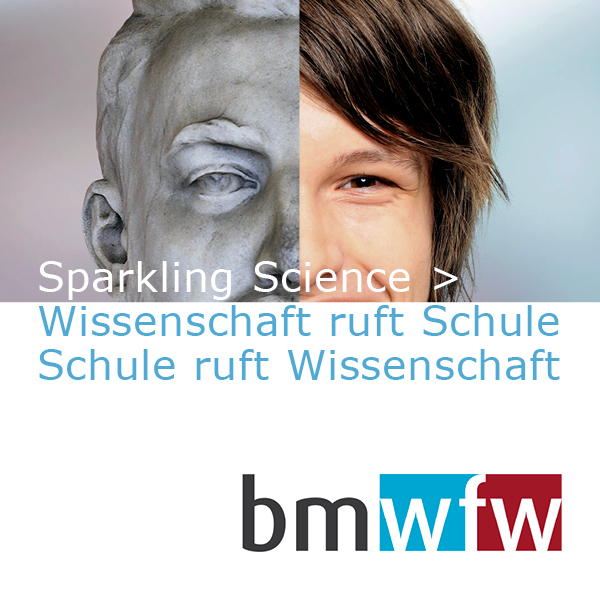
Image gallery
(Click on an image to enlarge)
https://www.citizen-science.at/en/component/k2/tag/culture?start=10#sigProId537f10b2da
This project fulfilled version 1.1 of the quality criteria for citizen science projects on Österreich forscht.
Categories to come
What is the project specifically about?
So much hangs on just one thing - and yet words sometimes fail us. How do we talk about our bodies and the things that we need, want, and do when it comes to sex and sexual pleasure? And who do we talk to about these things? Categories to Come invites everybody to put their sexuality into words, and to discuss new words or new uses of words with other people. Goal of the project is to create a platform and gather resources, that open up so far unnamed subject areas of sexuality. They will be accessible both for personal gain and interdisciplinary research.
How can citizens participate in research?
Citizens are actively involved in shaping the future vocabulary of sexual language and provide important impulses for research. Citizens can write down their own terms and descriptions for intimate activities and their own sexual desire. They can also collect and name passages from songs, books or films that are sexually interesting to them. They can look at films and photos and other cultural works and describe what can be seen there and index them. They can read books and texts and filter out places with sexual acts and tag them.
What happens to the results?
The results form a resource to illustrate previously unnamed areas of sexuality. This data collection will be organized and made available as a database and can be used to enhance studies by researchers working in linguistics, social sciences, sexology, gender studies and literature as well as for art production.
What does the research contribute to?
Categories to come helps to build a new resource for research on sexuality in different disciplines. The project is based on two assumptions, namely, 1) the existing sexual vocabulary has only been partly described, and 2) because of sexuality’s visual nature, lack of language, and location within the realm of experience, there are many fantasies and sex acts that nobody has yet attempted to put into words. The project Categories to Come combines artistic and academic research interests. In contrast to purely scientific research, the artistic element also allows one to become creative and to create new words. Categories to come thus contributes to making research into sexual language and sexual desire more diverse.
This project shows what the artistic aspect can be in a research context, how it produces a different kind of knowledge than purely scientific research and how this can make a contribution in an interdisciplinary context. By making the results publicly accessible, citizens can use the database themselves and find new ways and terms to talk about sexuality. This counteracts tabooing and promotes a conscious discussion of one's own sexuality.
Image gallery
-
 "so much revolves around this one topic" "so much revolves around this one topic"
"so much revolves around this one topic" "so much revolves around this one topic" -
 "and still we sometimes miss words" "and still we sometimes miss words"
"and still we sometimes miss words" "and still we sometimes miss words" -
 Facebook header of the project Facebook header of the project
Facebook header of the project Facebook header of the project
https://www.citizen-science.at/en/component/k2/tag/culture?start=10#sigProId8680991c3e
This project fulfilled version 1.1 of the quality criteria for citizen science projects on Österreich forscht.
Topotheque
The growing flood of images cannot be processed by institutions alone. Partnership with citizen scientists is vital. Topotheque is a digital archive and network in which this historical legacy can be gathered. For the locally resident Topotheque users, every new image and new piece of information means a valuable building block with which they can document their regional history in more detail. Enthusiasm for the work with the Topotheques creates local archives that captures an interest that goes far beyond regional interest. This includes prop managers and costume designers on period films and scientists who can retrace the spread of a cattle breed in the 1930s. People have very often discovered a photo of a great-grandfather in the photos that were provided by a previously unknown person.
Realisation
The Topotheque is run by a municipality or an association. Volunteers and digital archivists at the Topotheque work on behalf of the municipality as links with the general public. Running a Topotheque is easy and the entry field on the administration user interface meets the international archive standard. Before the update was started, the Topotheque volunteers were introduced to the system in a two-hour training course using ICARUS. A Topotheque is usually opened at a locally organised event in which interested members of the public are presented with the Topotheque as a digital option to gather contemporary documents. Local museums and municipal archives often benefit from the Topotheque, as they can be sent originals. Similarly, memory institutions can take advantage of the Topotheque as a platform for their own inventories.
Dialogue counts
The Topotheque creates new groups of users. A Topotheque can not only answer questions about the history of a castle complex, but also provide quick information on the questions “What did the inn look like in the 1960s?” or “Are there photos of old innkeepers?”. Questions asked offhand, which often refer to details, can be answered. These questions are asked by a new and often younger userbase. To get in touch, you can ask the Topotheque a question, which can be answered directly through the website. This is because dialogue is the heart and soul of the Topotheque.
Expansion
The Topotheque was developed in an office in Wiener Neustadt. Based on the first “Prater” Topotheque as an example, municipalities in Lower Austria were the first to make private material about the community history available with the help of volunteers. The Topotheque was also well received in Upper Austria and implemented in a regional project as part of LEADER. The LEADER regions Weinviertel-Ost, Weinviertel Donauraum, Traunviertler Alpenvorland and Eferdingerland as well as other regions are using topotheques or preparing to use the Topothek. With Carinthia, where the Topothek was launched as a provincial project, the Topotheque is now being joined by a new province. In the “co:op” EU project, the topic of which is communication work in the archive, the Topotheque was established in seven other countries. Through the international archive platform ICARUS, the Lower Austria state archive joined as a scientific partner.
https://www.citizen-science.at/en/component/k2/tag/culture?start=10#sigProId0a0fa5221b
This project fulfils version 1.1 of the quality criteria for citizen science projects on Österreich forscht.


